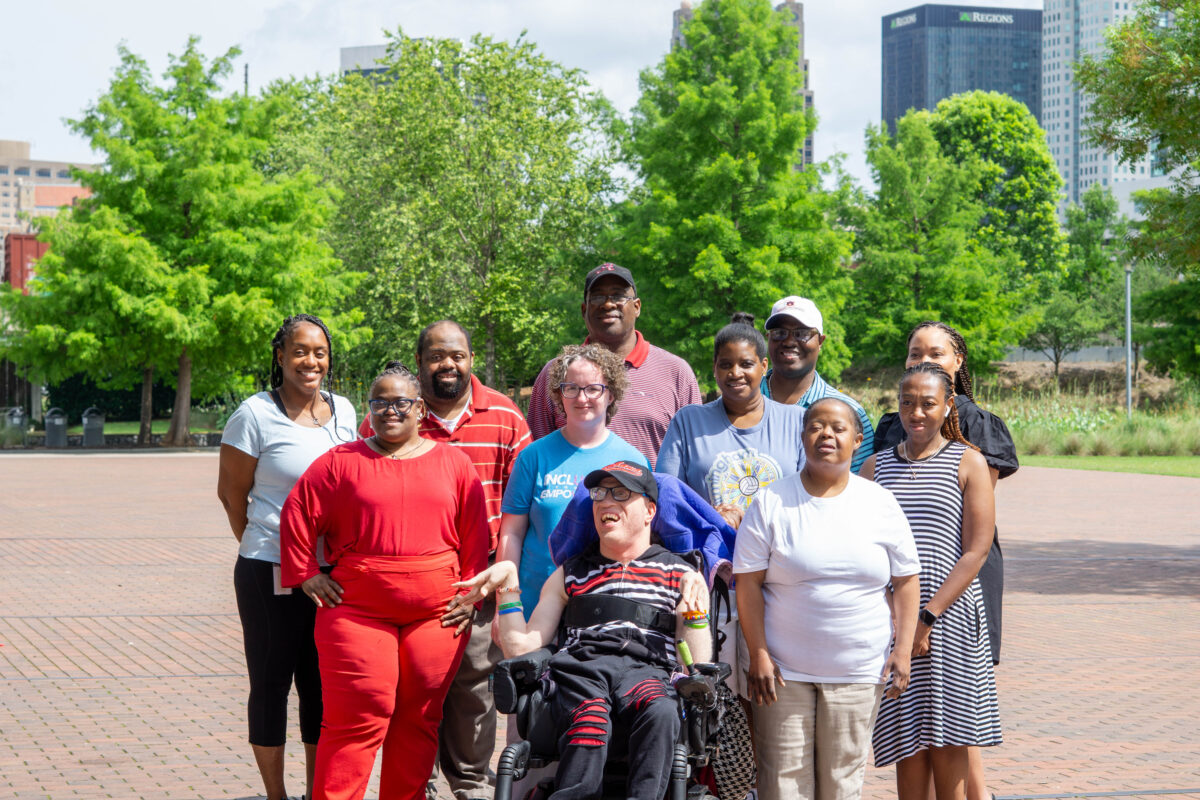Touch lives every day with a nursing career at Children’s of Alabama
Reading time: 9 minutes
Partnered Content

It’s pediatric nurses week, and we couldn’t think of a better time to explore nursing careers at Children’s of Alabama. We talked with two nurses—one with 25 years and one with eight at Children’s—to find out more. If you’re a nurse and you’re wondering about your next step, hop over here for nursing and other job listings at Children’s.
Meet Shannon Sharit, a Department Director who’s been at Children’s for 25 years

“I wouldn’t work anywhere else. I think it’s great.”
Shannon Sharit
I’ve been at Children’s 25 years this year. Sometimes this feels like an eternity and other times it feels like yesterday I was a nursing student coming to interview and scared of my own shadow.
I’ve grown so much because of Children’s. I came the last year of nursing school as a clinical assistant and started in the special care unit. Once I graduated from school, I became a staff nurse there which led to my next role as charge nurse for 13 years. Then I became the director of the special care unit.
One and a half years ago, an opportunity opened up on an acute care floor, which has allowed me to grow even more completely into a different side of nursing and managing.
Meet Marina Keplinger, who’s been at Children’s for 8 years

I am a charge nurse on the Hematology-Oncology Bone Marrow Transplant Unit. I’ve been on Hem-Onc for the duration of my employment. I started there as a clinical assistant, became a nurse in 2015 and I believe I’ve been in charge since 2017.
Bham Now: What do you love about working at Children’s?

Shannon Sharit: Initially, as a student, I was drawn to Children’s because of the kids. I knew I wanted to work with children—if you’re in the state of Alabama, Children’s is the place to go.
Over the years, it’s become about so much more than the kids.
The entire organization is a great place to work. From housekeeping to the pharmacy and all the disciplines up to administration, everybody has the same goal—to take care of the kids and their families. It’s a wonderful experience to be a part of that every single day when I come to work.
Marina Keplinger: My favorite thing about my job is the family of coworkers that I have. You will not find a team like this or the love that we all share anywhere else in Birmingham.
We have a good crew.
Does Children’s sound like the place you’d like to grow your career? If so, hop over here to apply for current nursing jobs.
Bham Now: Why did you pick Children’s?

Shannon Sharit: I knew I wanted to work with kids. While other hospitals do pediatrics, they do very basic things. If you need surgery or a specialist, you come to Children’s.
Growing up in a small town in north Alabama, I heard about it and was drawn to it because of its reputation. That feeling of awe drew me initially. The longer I’ve been there, it’s the people I work with who keep me there. From the top to the bottom, it’s a wonderful place to work.
Marina Keplinger: I went to nursing school in order to work with pediatric cancer patients. Children’s is where we can do that here in Birmingham. We have the only inpatient pediatric cancer facility in Alabama, and we draw children from surrounding states.
Bham Now: From what you know, how does a career at Children’s compare to other places?

Shannon Sharit: From what I know, working with children is definitely more challenging unless you’re working with teenagers. Some are developmentally limited or not at a level where they understand enough to cooperate.
Adults can cooperate more easily—they understand there’s a greater good that’s worth going through something unpleasant for.
Also, when adult family members are at the hospital with the children, it’s very stressful for them. Not only are we taking care of the child—we’re also taking care of the family, and sometimes they behave in a way that’s not their normal behavior.
Marina Keplinger: We did clinicals in a bunch of different facilities throughout the Birmingham area—we have a surplus of hospitals and medical facilities here. You will not find the care and the appreciation for detail that you will find at Children’s of Alabama.
The level of care at Children’s is excellent. Knowing that I’m taking great care of my patients is super-rewarding. This year has been difficult for everyone, especially nurses. I have not felt unsafe or unable to do my job at all.
Bham Now: What does Children’s of Alabama do to help nurses learn the art of nursing, and how to handle the challenges that arise?

Shannon Sharit: It starts at orientation where the nurses and support staff talk a lot about the developmental levels of children.
For example, you have to know how to work with the family to help if you need to start an IV in a 3-year-old. We talk about things like this at the orientation level, in early days in classes, on the unit when you work side by side with a nurse—how to engage that family to help you take care of their child.
It helps you do your job and it helps give the family a sense of control when they’re part of taking care of their child.
Marina Keplinger: We have a really good mentorship program. I know on our floor, we work hard to make sure everyone is adequately oriented, and then we have weekly check-ins to make sure they are learning all of the nuances and ins and outs of their jobs
Our mentorship program assigns each nurse a resource. In addition to an orienter, if you’re having any kind of frustration, there’s another person to come to.
All charge nurses are very involved in the orientation process. We work together to make sure everyone is where they need to be when they finish and that they are happy. We want everyone to be comfortable in their own shoes and abilities as a new nurse. It’s a scary role, especially with the level of kids we take care of—we see some very sick children on our floor.
Bham Now: What are the rewards of working with kids?

Shannon Sharit: Where do I start? Seeing the smiles on their faces, even when you have a kid who is so very sick but they still want to play, it makes us give our best every day.
There are sad stories, too—they don’t all have a happy ending, but there are so many happy endings.
When we work with a kid who would never be where they are without the support we gave them and they come see us afterwards with a smile on their face and tell us what we’re doing—even though we played a small part in helping them get there, there’s no better feeling in the world.
Marina Keplinger: That list is so long and so hard to describe. You form bonds with these people, these families and these children that you never expected to.
As a nurse, you can go in and pass your medications and do your assessments and never connect with a patient.
Working with these children, you have to form these relationships and develop trust in order be able to get an adequate feel for how they behave. If they shut down, they’re not going to let you do anything. Convincing children to take meds and have procedures done is very difficult—they have to love you back.
Some fun facts you probably didn’t know about Children’s of Alabama
Children’s of Alabama is one of the top 20 employers in Alabama, with more than 5,000 employees across the state.
Nationally, here’s some of what makes Children’s stand out:
- consistently ranked in US News and World Report’s Best Children’s Hospitals edition.
- one of the 10 busiest pediatric hospitals in the nation, with the busiest pediatric emergency department in the southeastern US.
- the only Accredited Pediatric Epilepsy Monitoring Unit in the US.
- one of the largest pediatric rheumatology programs in the country.
And in the Southeast:
- one of the largest pediatric cardiology programs in the region.
- the only pediatric hospital in the region to offer paired solid organ transplants.
In Alabama, Children’s is—or has—the:
- first + only LEED-certified healthcare facility + the only free-standing pediatric hospital.
- only pediatric ECMO (heart/lung bypass) program.
- only pediatric burn center—one of the largest in the Southeast.
- only Level IV NICU—in conjunction with UAB’s Regional NICU.
- only pediatric kidney dialysis program—one of the largest in the country.
Also, the world-class cancer center at Children’s treats more than 90% of all children diagnosed with cancer in Alabama.
Finally, Children’s of Alabama is the only hospital in Birmingham with a nursing educator on every unit + every shift, which means continuous learning.
Want to work at Children’s of Alabama? Follow them on social at Instagram or Facebook or visit their website to apply for a job today.
Partner



